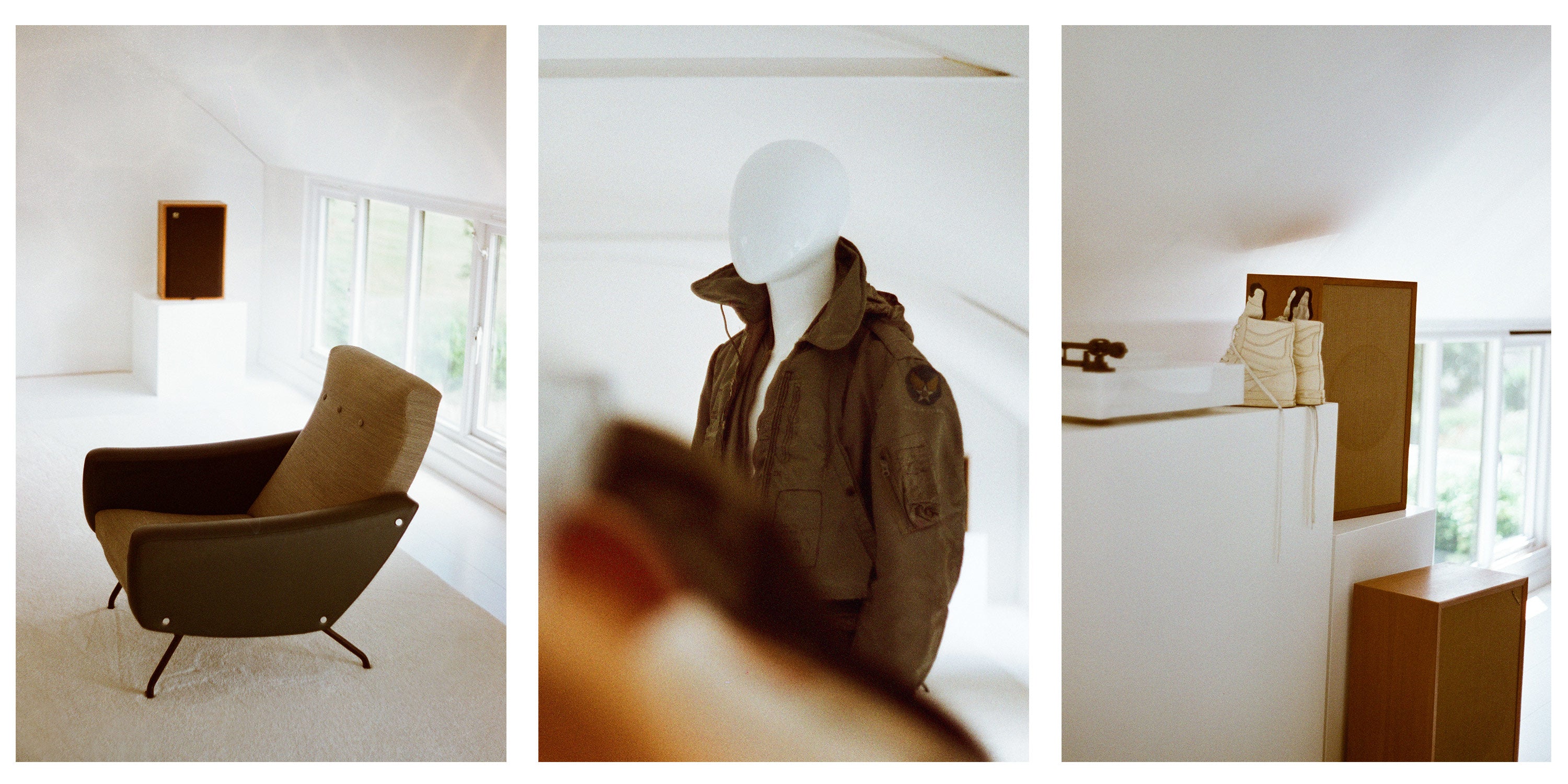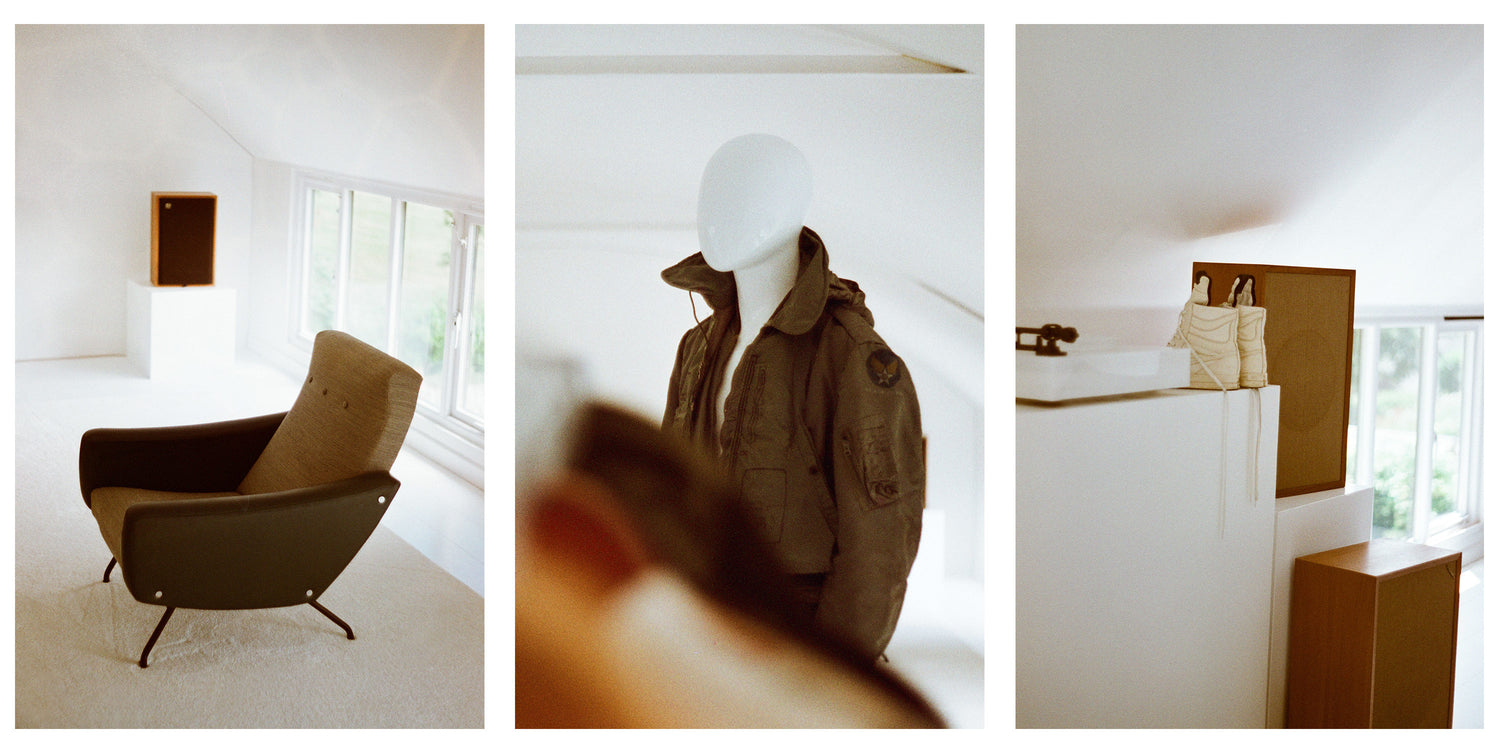GUY BERRYMAN
The Coldplay Bassist Turned Menswear Designer
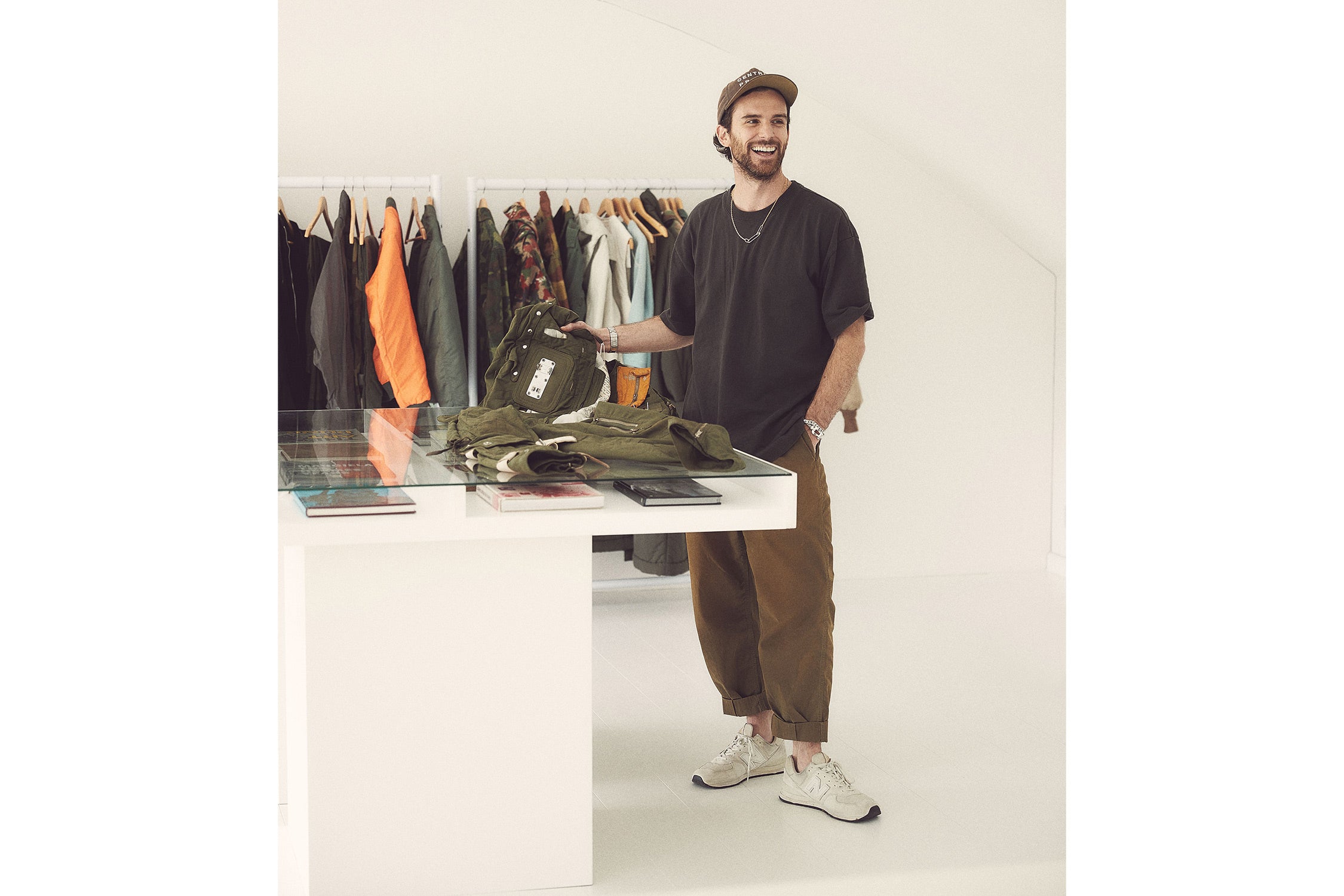
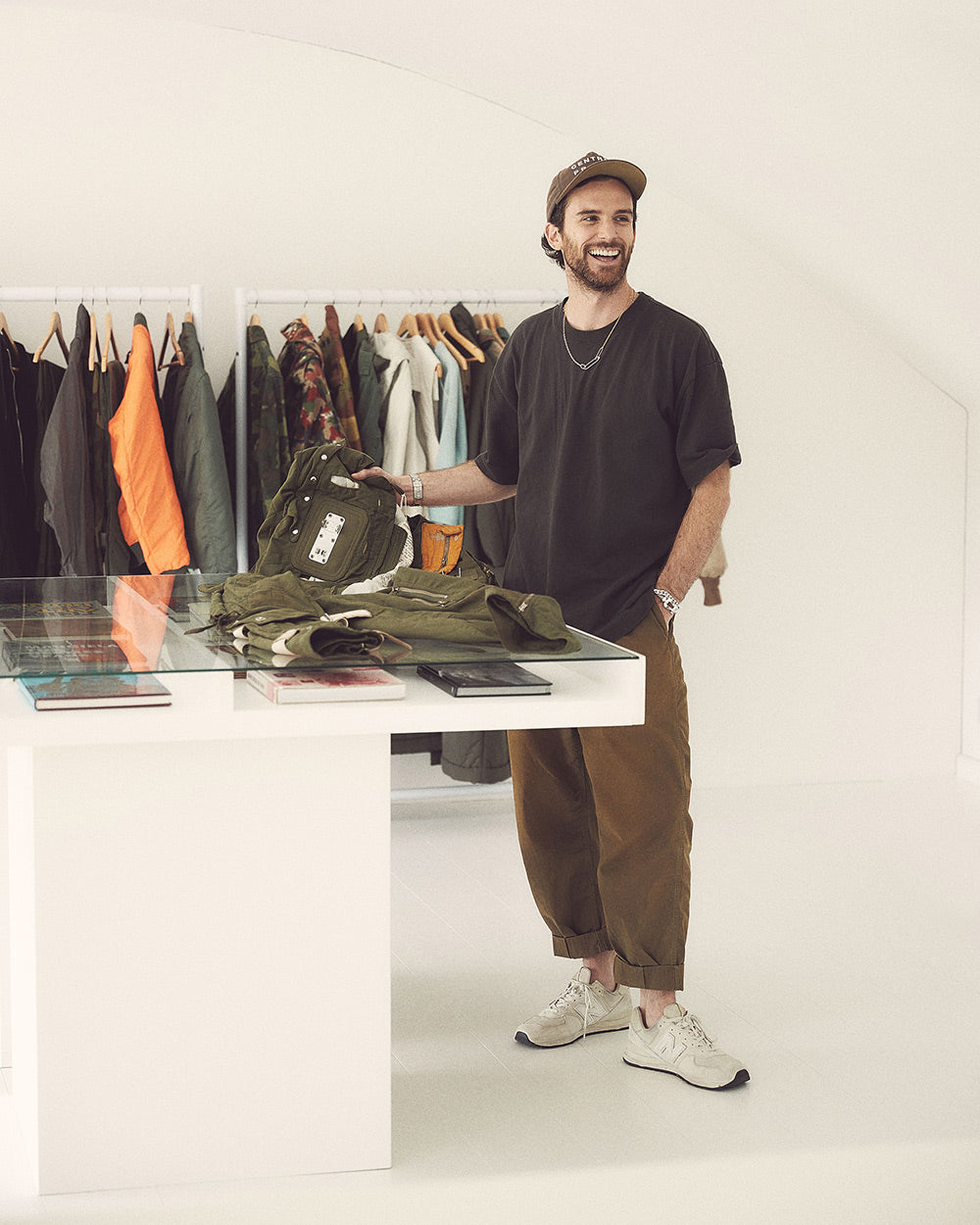
Guy Berryman is best known for playing bass in Coldplay – one of the biggest bands of the 21st century, having sold more than 100 million records in its 25 year history. What fewer people know is that he’s also the designer and creative force behind the newly launched menswear label Applied Art Forms. Our founder Lewis sat down with Guy Berryman at his home and design studio in the Cotswolds to find out more about his fashion label and his many interests.
You have an appreciation for well made products and are a noted collector of archival menswear, mid-century furniture, watches and cars. Tell us a bit more about your background, and what drove you to launch Applied Art Forms.
I’m passionate about all things mechanical, whether it be pre-war tools, watches, cars and engines. I grew up loving machinery. My father was an engineer and I was studying to be an engineer. I have long been interested in classic workwear and military clothes. At heart I’m a collector who gets excited by the smallest detail of design.
I got to a point a few years ago when I felt like I wanted to reconnect with those early disciplines that I was studying when I was young. One of my obsessions is for military utilitarian clothing. I was looking at my archive one day and I saw a wealth of ideas that could be interpreted, which would allow the creative process to begin. I spotted gaps in my wardrobe and wanted clothing that was suited to the way we live now, with every design element considered and honed into a perfect garment.
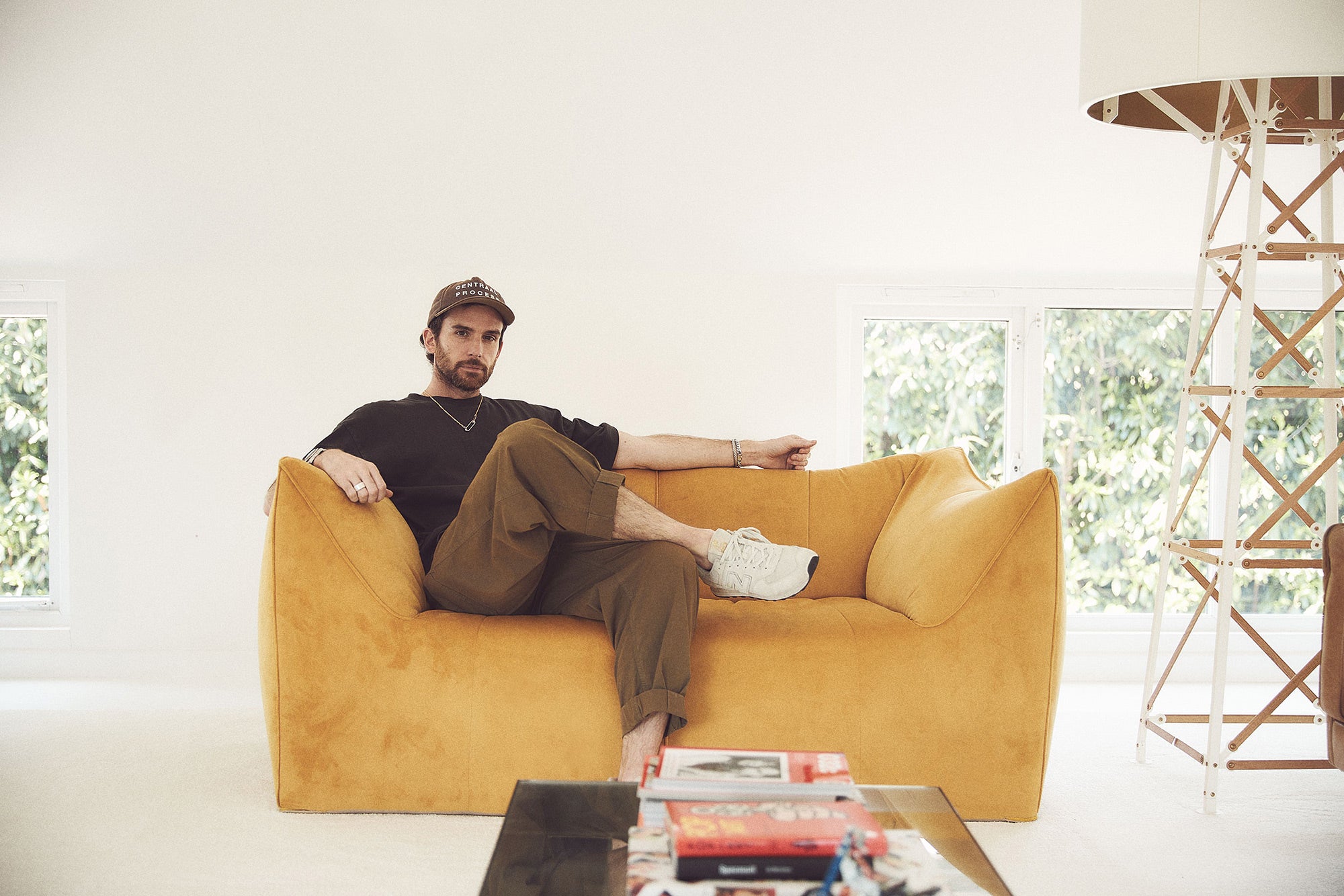
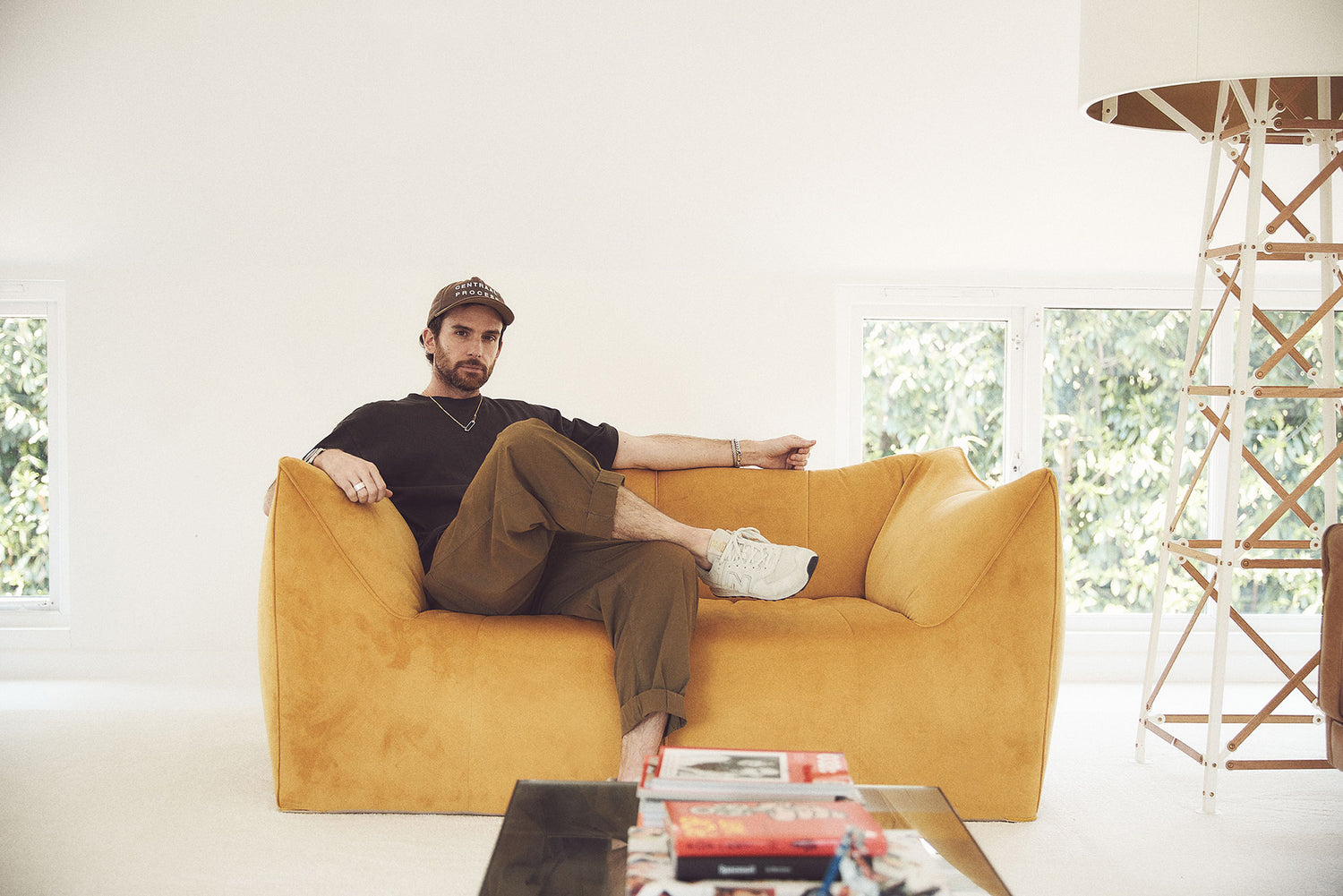
Applied Art Forms finally launched during lockdown in November 2020 after three or four years of planning and development. Ultimately, the label is a vehicle for me to express myself creatively.
How do you juggle making music, running an up-and-coming menswear label and editing a disruptive car magazine (Road Rat)?
I’ve learned to adapt and to communicate efficiently with the various teams – the pandemic created a seismic shift in the way we communicate via video conference tools and that’s a process that has continued for me since the restrictions have been eased. That being said, it’s always more productive to be together in the studio with the band or in the design office with the AAF team.
You have an extensive archive of military / vintage pieces – what are some of your most coveted pieces?
A rare mid-century Beaufort life jacket. It’s the single most complicated garment I’ve ever seen, with zips and flaps for oxygen canisters and inflatable devices. It provided all the details for our outerwear and remains a great source of inspiration. In general, I find the complication of many military garments inspiring – especially flight suits and garments which have a life dependent functionality in case of emergency situations. There’s a sort of life-critical essence to them which is arresting.
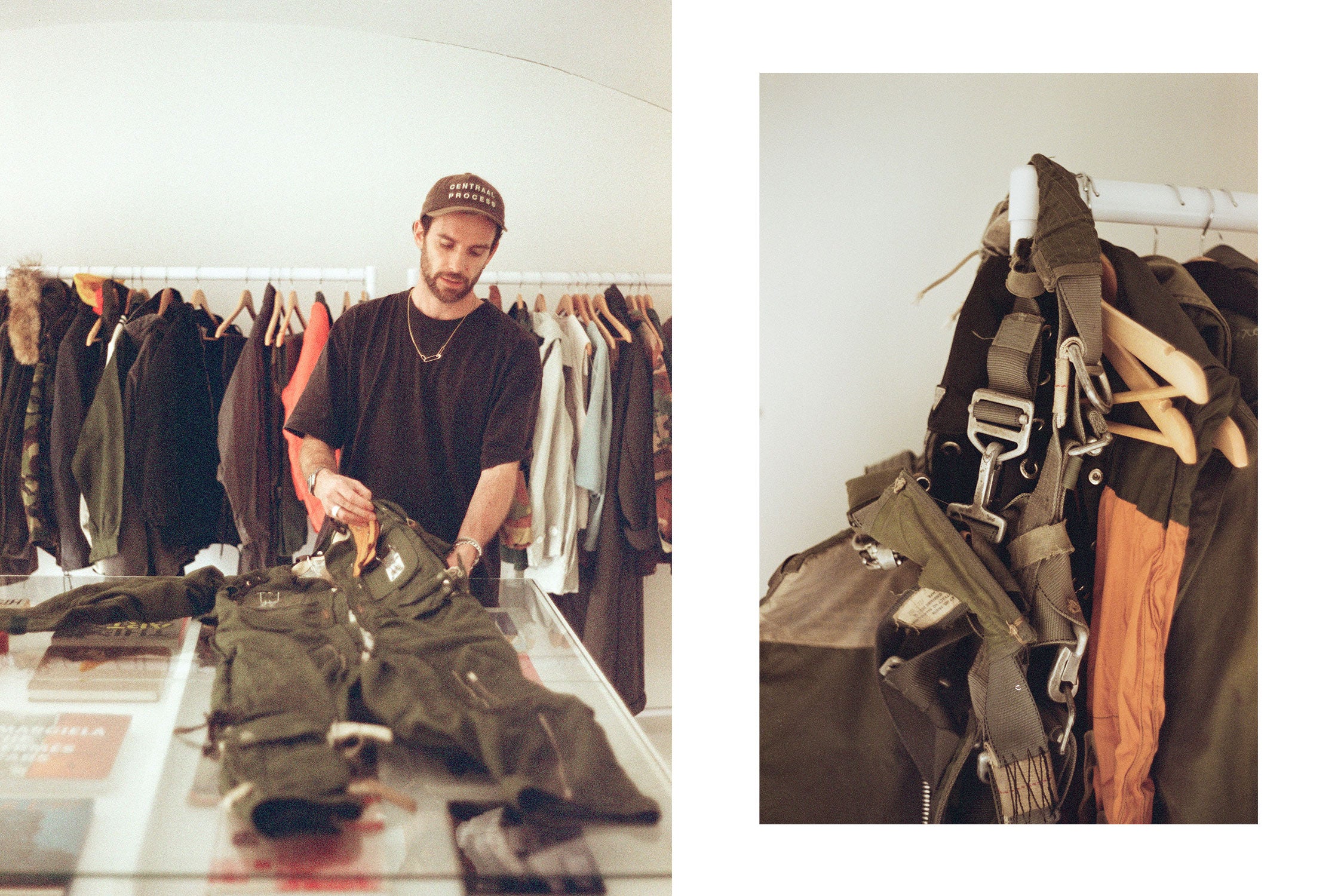
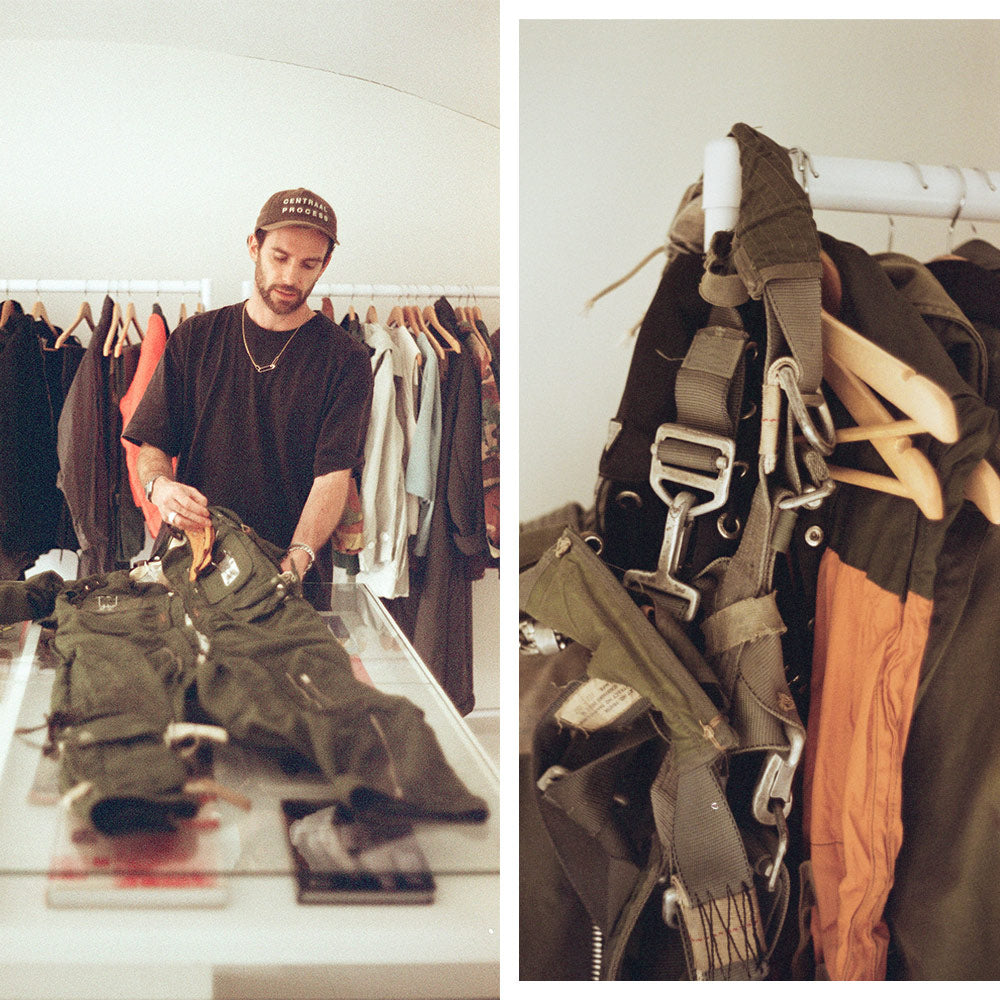
It’s quite apparent that Applied Art Forms is heavily influenced by vintage military and utilitarian pieces. Can you tell us a bit more about your design process, from inspiration to design and construction?
The process often involves deconstructing and reconstructing rare vintage pieces in order to realise the perfect modern silhouette. I call these experiments ‘Frankenstein monsters’ – and our process often begins as a physical sculpture rather than a drawing. We will usually alter the fit to make things slightly oversized and boxy in form – that's just the way I like to wear things. I love looking at the finest details and most of our garments have a specific material story – we use a lot of Ventile in outerwear which is a heritage fabric created in the 1940’s. Ultimately, I’m trying to make clothes that clearly aren’t just copies of things and that have been done in the past – but still seem timeless in design. I design almost everything we make to look better as it ages, fades and takes on character – I imagine our outerwear to improve with time in the same way as a denim head will wear down a pair of raw denim jeans.
We also love 1990s-era pieces by some of my favourite designers including Martin Margiela and Helmut Lang. They both explored vintage military styles and reworked them and so we always look at original garments as well as having the benefit of seeing how others reworked ideas. We might combine the silhouette of one style with the details of another. And then we might elevate the construction details. When it comes to manufacturing and stitching and detailing, we’ve managed to do something quite special, and the quality of the materials sits alongside most luxury brands. The focus is really timeless design, fit and supreme quality – I’m not interested on putting branding on clothing as I just think it cheapens the whole feel – a lot of people have suggested there should be visible branding but I have no interest in doing that whatsoever.
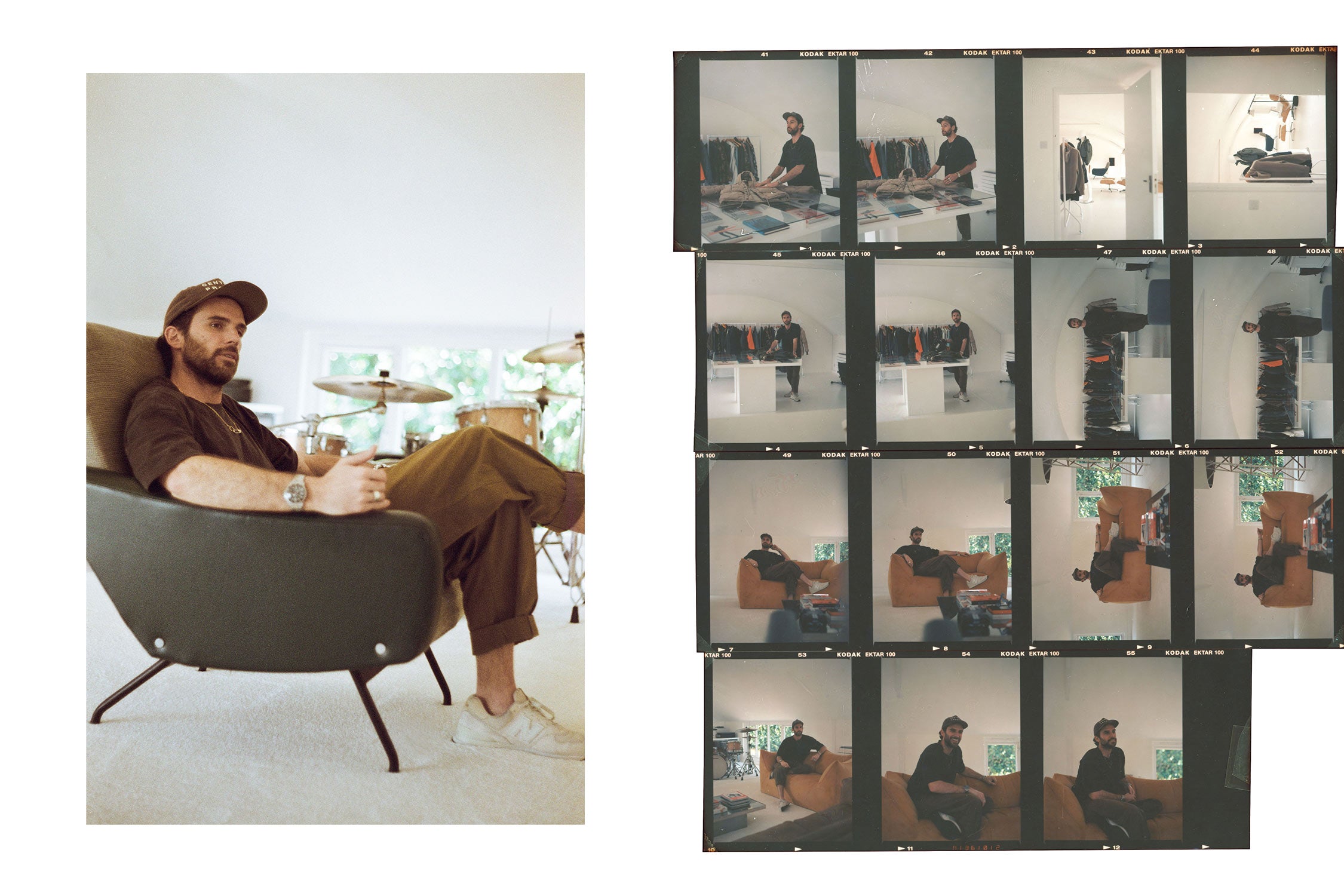
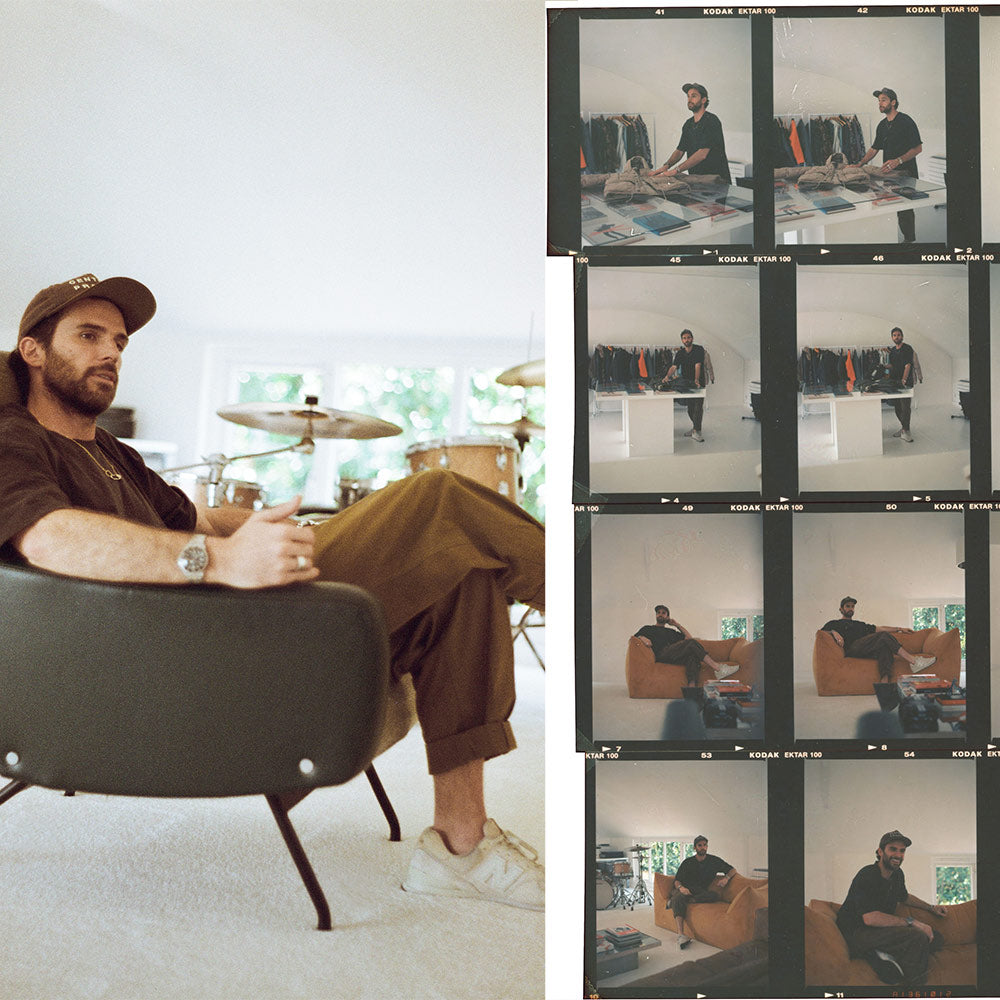
Where do you source your vintage pieces from? Do any favourite stores come to mind from your world travels?
I am a collector of many many things – and it can be exhausting. Ultimately I’m obsessed with discovery and my curiosity is seemingly endless. I’ll find things in vintage stores, flea markets, eBay, charity shops, garage sales – and getting to travel so much means there’s always a new wealth of places to visit. My last discovery was a small vintage clothes store in Paris called Pretty Box. Fantastic curation so you don’t need to go through rails and rails of junk to find stuff.
What are some of your all time favourite brands? And why?
The real 1990’s Margiela and Helmut Lang I’ve mentioned – but generally a lot of Japanese bands, Yohji Yamamoto, Comme des Garçons, Issey Miyake, Visvim always have good material stories like we do, Auralee, Engineered Garments operate in the same reference points – I mean the list goes on and on. I think OAMC are very interesting and I love their collaborations with Adidas. There’s a lot of small but great Korean menswear brands… But I think finding original pieces from the 1950’s and 60’s will always have the heaviest influence on what we do. We then add shape and drape in the way the Japanese are so good at.
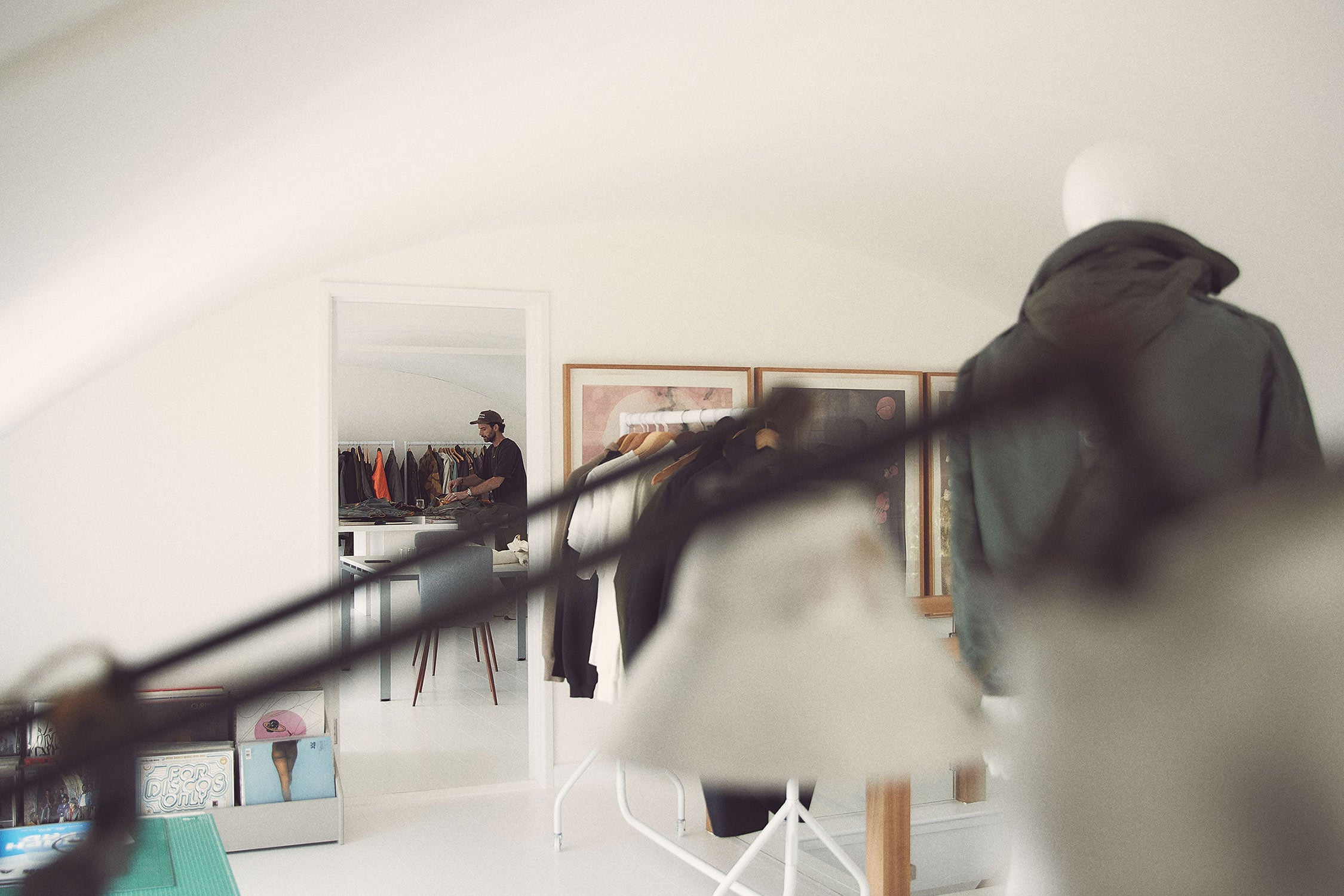
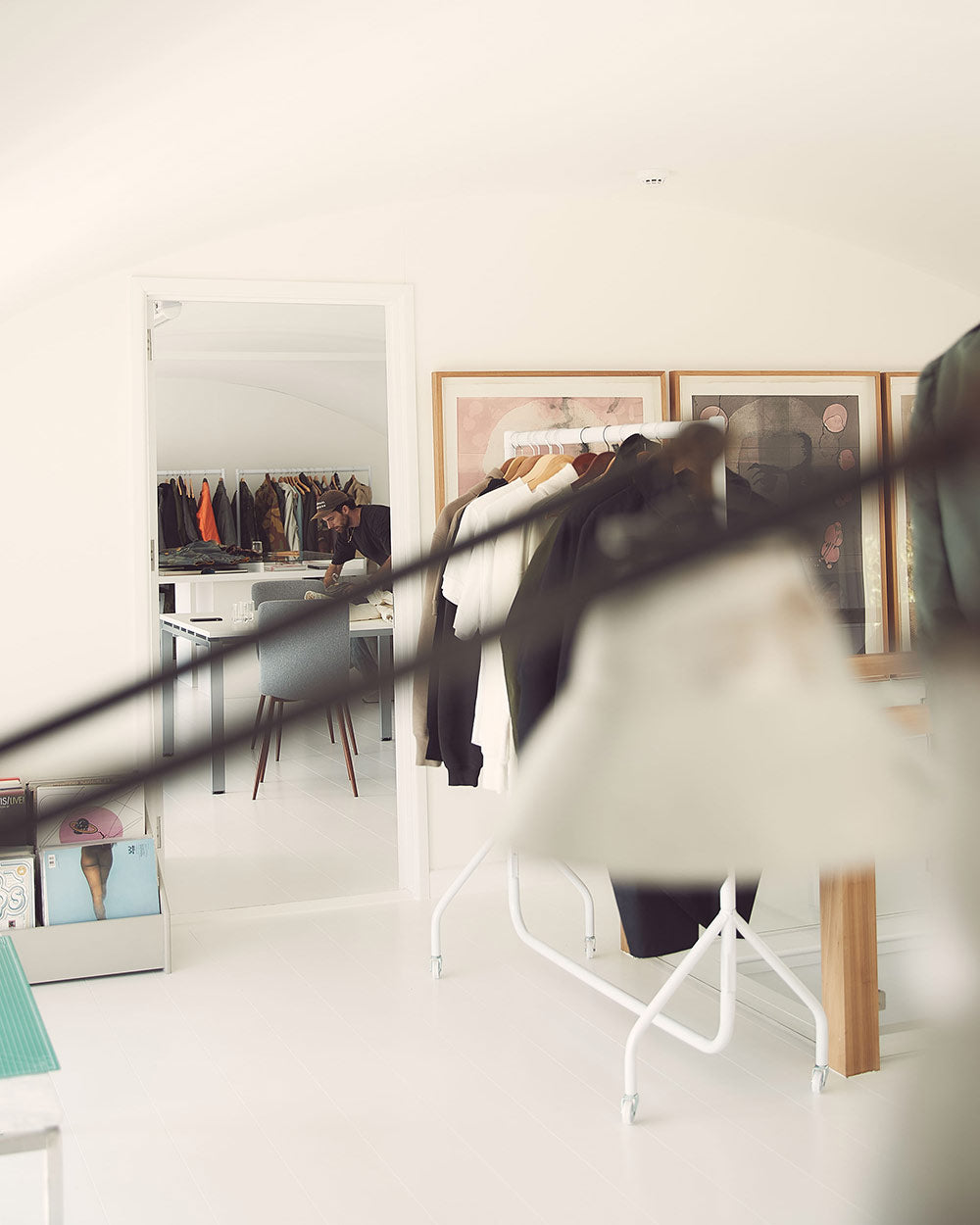
You mentioned in a Mr Porter interview that “In 70 years, somebody might be wearing an Applied Art Forms parka. It’ll be all worn and faded and it might still be a covetable item”. With your focus on longevity, do you think pre-owned clothing is here to stay?
My focus is on longevity. I try to create styles that are relatively timeless, made from materials that will last and age beautifully. When you’re putting a new garment into the world, you have to ask: is it going to be worn and how long is it going to last? I like to buy vintage and pre-worn garments – as well as new. I think as people appreciate the history of fashion there will always be a growing secondary market. If you look at the value of early Raf or Rick Owens pieces it's astonishing – and encouraging to see that outside of the sales/discounting culture we live in, special pieces of clothing design can be appreciated and valued at many times their original retail value.
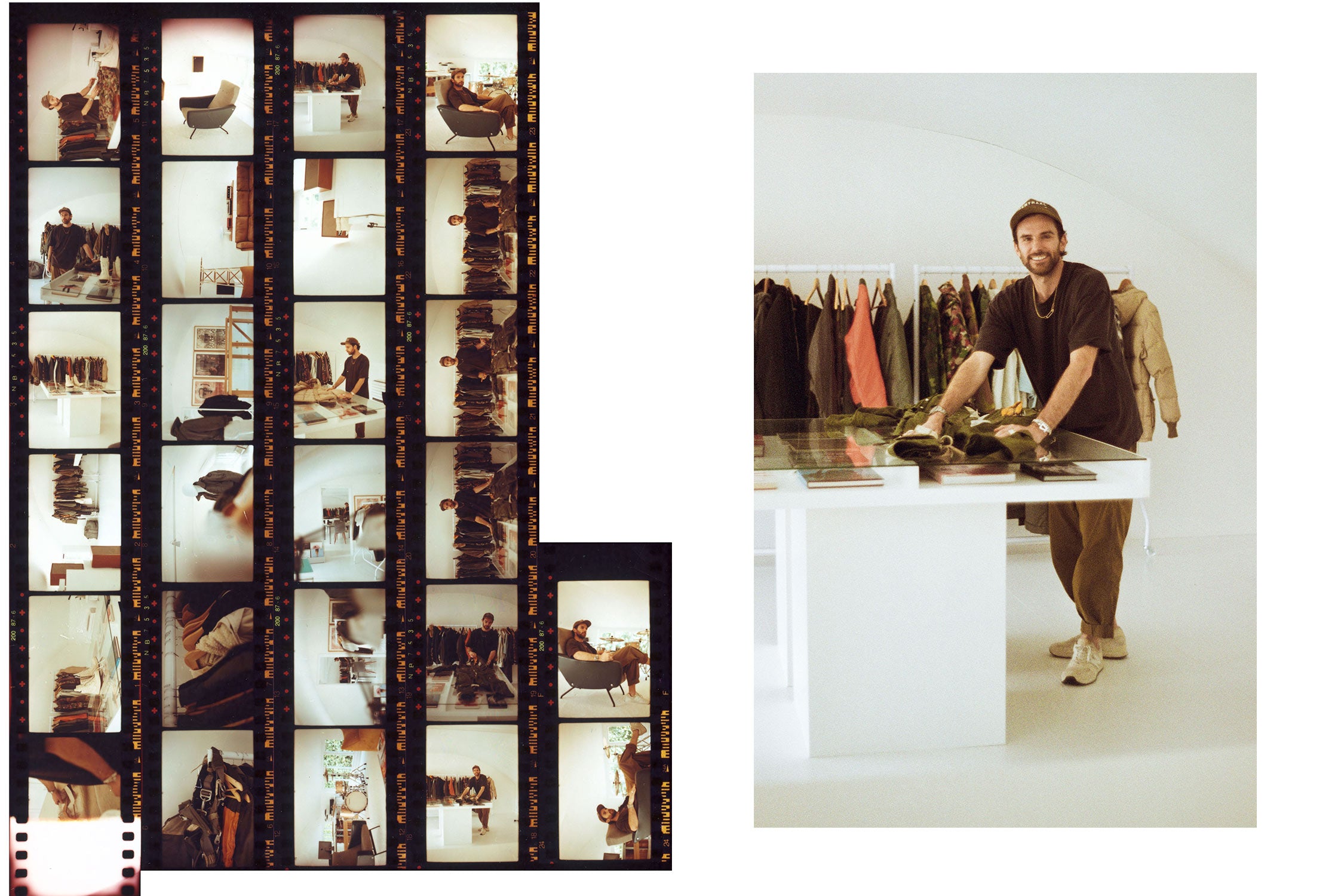
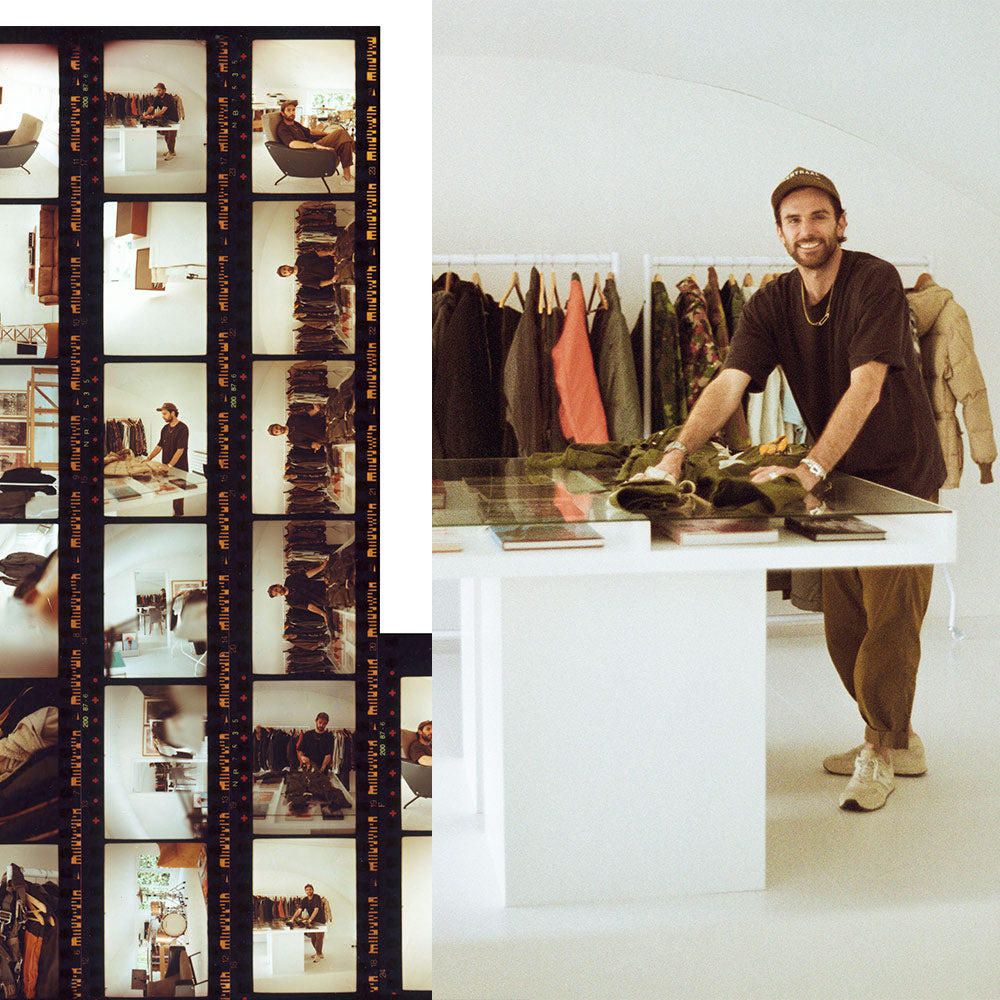
Can you tell us a bit about some of the pieces you’re selling with MARRKT?
We all have too many clothes probably – and I find I go through phases of wearing things and then they sort of end up getting relegated to the back of the wardrobe – it doesn’t mean to say that they aren’t good anymore, its just that I’ve moved on from them for whatever reason. So the selection of clothing I’ve put into Marrkt is a reflection on that – as well as a lot of items I ended up with from styling sessions and photoshoots I’ve done with the band over the years that none of us ended up taking home! There might be a few items which belonged to my partner Keshia as well as a few vintage items I had no further use for.
Guy Berryman was kind enough to donate a selection of pre-owned gems from his personal collection, from Helmut Lang to Jil Sander. The proceeds from Guy's sale will be donated to Save The Children, and their efforts to help with the war in Ukraine.
Photography by Ben Benoliel
